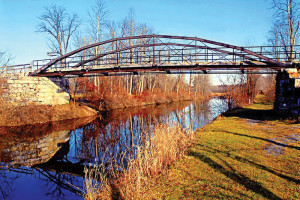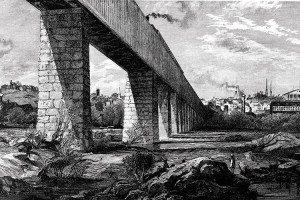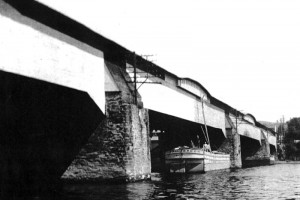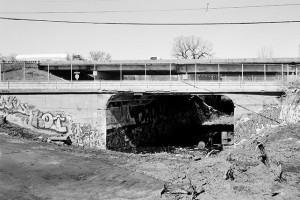Iron bridges in Great Britain date from 1779 when the cast iron Coalbrookdale Bridge was built across the Severn River. It was followed in 1796 with a bridge by Thomas Telford at Buildwas just upstream from Coalbrookdale. Telford also built several aqueducts of cast iron, as well as two other roadway bridges at Craigellachie in 1814 and Betws-y-Coed in 1815. He even proposed a cast iron bridge with a 600-foot span in 1799 to replace the London Bridge across the Thames River. …
Review Category : Historic Structures
First Railroad Bridge across the Connecticut River in Massachusetts
The Boston and Worcester Railroad, one of the first railroads built in Massachusetts, was chartered in 1831 and opened to Worcester in 1835. This was followed by the Western Railroad, which would begin in Worcester and run to the New York State line, connecting with the Hudson and Berkshire line that ran to Albany, New York, on the Hudson River. …
Mighty Colossus, Bestriding the Ancient Powhatan
It was early in railroad development in this country when the Richmond & Petersburg Railroad was proposed and chartered in 1836. It ran from just north of Petersburg on the north side of the Appomattox River to just south of Richmond on the James River. The charter stated the line could be extended into both Richmond and Petersburg upon the approval of the Common Council of each city. …
Tubular Bridges and Boston’s Mechanics’ Fairs
Between September 20th and October 2nd of 1841, an estimated eighty thousand people visited the Third Charitable Mechanic Association Exhibition held in Boston’s Faneuil Hall and Quincy Market. …
The Baltimore & Ohio Railroad broke ground in Baltimore, Maryland on July 4, 1827 and planned on running from Baltimore to the Ohio River along the Potomac River to Cumberland, Maryland. After delays at Point of Rocks due to a right of way conflict with the Chesapeake and Ohio (C&O) Canal, it arrived at Sandy Point, across the river from Harpers Ferry, on December 1, 1834. …
The Symbols of Progress Do Not Have an Age
March 31, 2014 marked the 125th anniversary of the inauguration of the Eiffel Tower. Erected in 1889 on Champs de Mars in Paris for the Fourth World Exposition, the Eiffel Tower became famous even before its opening. …
In 1811, the only bridge crossing the Schuylkill River near Philadelphia was Timothy Palmer’s Permanent Bridge that opened in 1805 (STRUCTURE®, October 2013). Ferries continued to serve the community at the Upper Ferry (Sheridan’s) and the Lower Ferry (Gray’s). Both of these ferries at times also had floating bridges adjacent to them. As early as January 30, 1811, an Act was submitted to the legislature authorizing “A company for erecting a permanent bridge over the River Schuylkill at or near where the floating bridge of Abraham Sheridan is at present situate, known by the name of the upper ferry in the County of Philadelphia.” …
Theodore Burr had just finished his Union Bridge in Waterford, NY (STRUCTURE, February 2014) when he was called to Trenton, New Jersey to build a toll bridge across the Delaware River just above the falls. …
The Union Bridge, connecting Waterford and Lansingburgh, New York, was the first to cross the Hudson River in its 154 mile course from New York harbor northward. It was located near a long time ford and ferry crossing. The first act leading to the bridge was passed by the legislature on April 15, 1800 when it authorized building of toll bridges across the Hudson River. Nothing was done until late 1802 or early 1803, when a group of the leading men of Waterford and Lansingburgh proposed the formation of the Union Bridge Company to build a toll bridge at the site. …
Two days of expected work turned into a week; one equipment breakdown cascaded into another; a 30-minute delay became 24 hours. A documentation project that was scheduled to happen in June did not begin until September. The challenges of keeping a bridge demolition project on schedule are not unique, but the requirement for historical documentation of a 1912 reinforced concrete bridge by historians and engineers added another layer of complexity to a highway widening project. However, this documentation effort ultimately provided interesting information about the early development of reinforced concrete flat slab design. …










